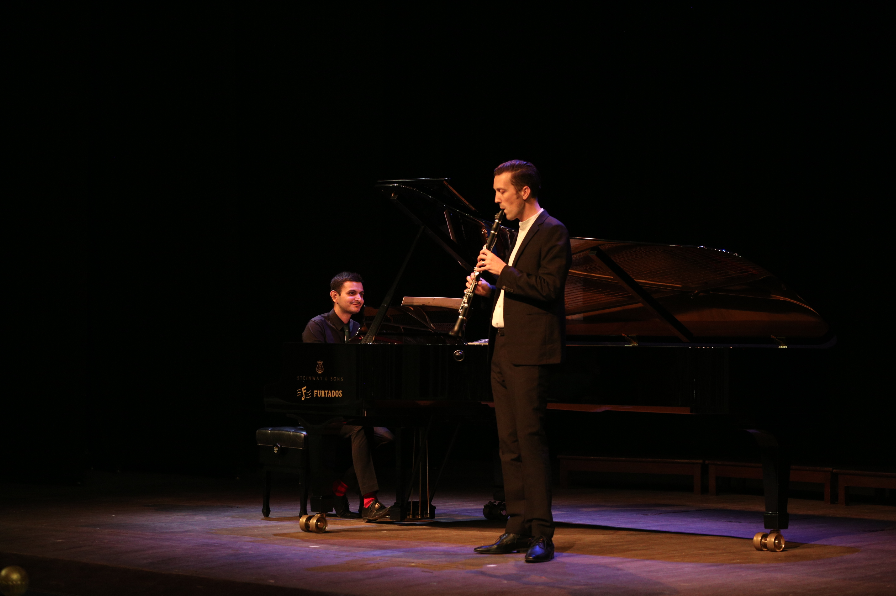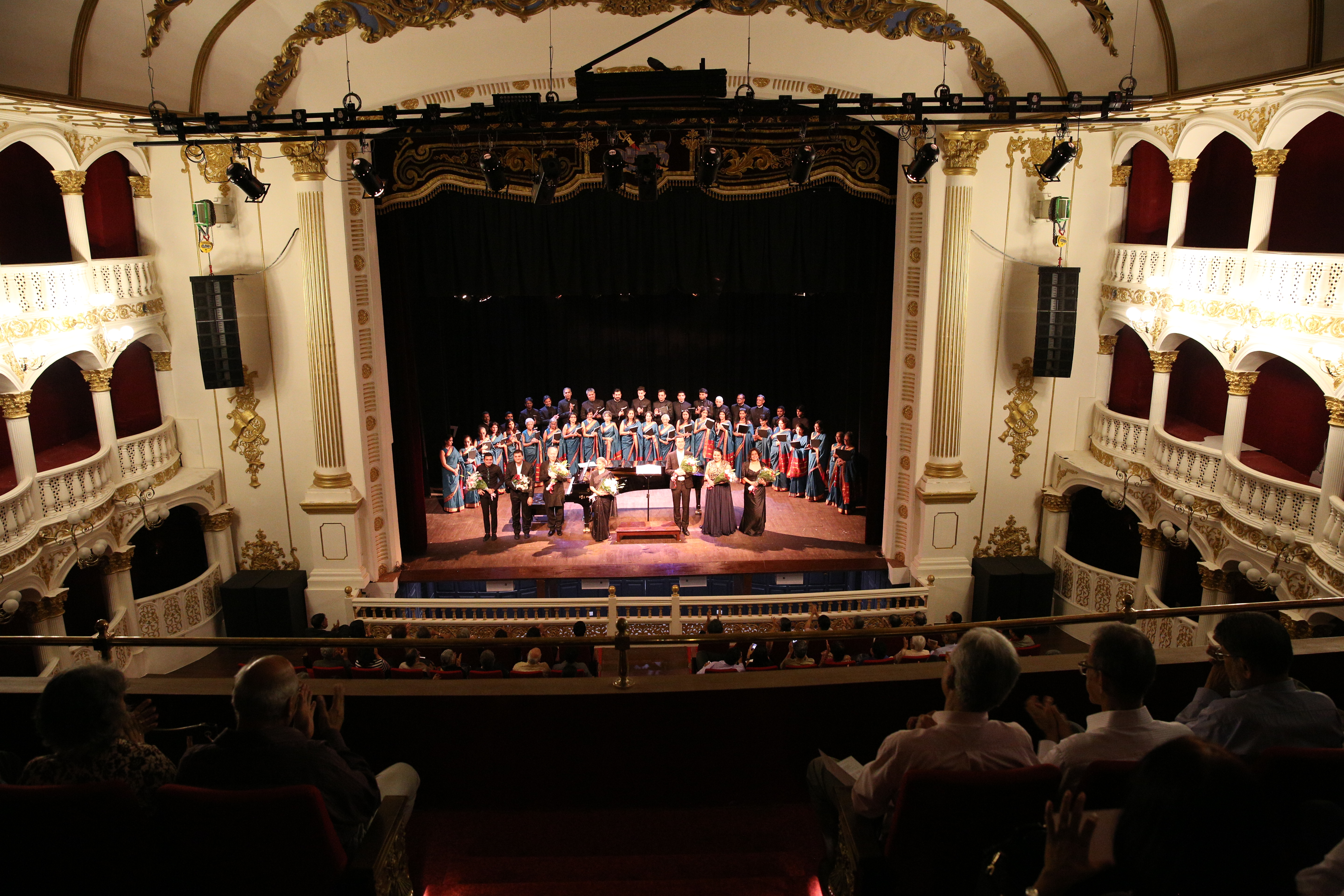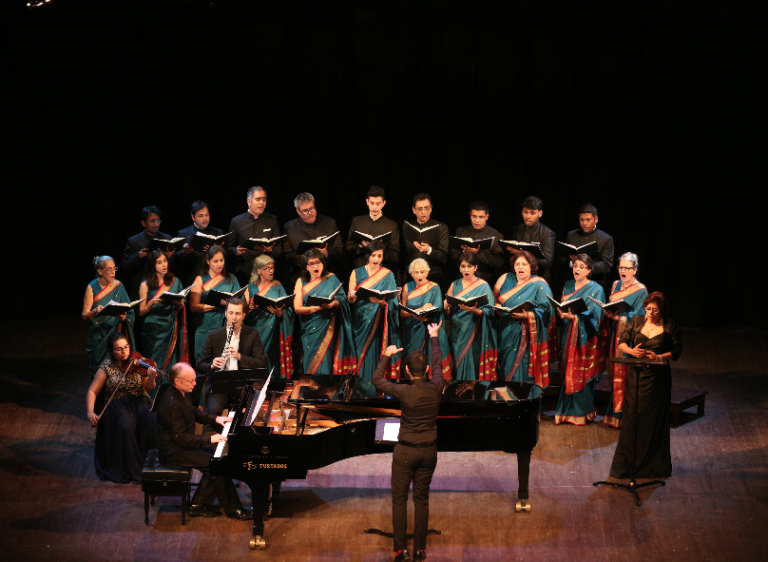Billed as the opening night gala at the Royal Opera House Mumbai, this evening of assorted bon-bons on the 22nd of October 2016 hit the right chord. Produced by Parvesh Java(the knight in question) and supported by Furtados, it was very successful on all counts but one. Let me get that away with immediately as the only caveat was that it didn’t work as a programme. Although each of the parts were excellent, but I am forced to admit that my attention wavered on occasion.
The legendary Soprano Patricia Rozario OBE was in fabulous voice, possibly even better than on the earlier soft opening night. Her vocalise was truly triumphant riding the top notes easily with full vocal quality to end the first half. I wish she had ended the programme with her Schubert “Shepherd on the Rock”. Special mention has to be made of her husband accompanist Mark Troop and Nicholas Ellis on the clarinet.

And now what about Parvesh. His talents on display were extraordinary in the accompaniment to Nicholas Ellis’ clarinet in the first movement of Brahms’ second clarinet sonata. Both these sonatas Op. 120 were written for the clarinettist Richard Muhlfeld. Recently he had lost three of his friends – Theodore Billroth(The founder of modern surgery and an amateur musician), Hans von Bulow the conductor and pianist whose wife Cosima Liszt was later to marry Wagner and the great Bach scholar Philipp Spitta. Brahms was lifted out of this melancholy by the inspiration of this clarinettist who first performed these works with Brahms at the piano for the duke and duchess of Meiningen. In 1894 they were played many times among the friends of Clara Schumann and premiered in Vienna in 1895. On this evening the two musicians seemed to play as one with very successful gently undulating amabile melody that initiates the E flat major sonata. One is transported to simpler times, to the genial realm of the Biedermeier Schubertiade. To be sure, the “turn” motive at the head of the theme finds immediate and dynamic development, as is Brahms’s manner, but impassioned outbursts are rapidly quelled. The theme in the dominant provides a close cannon between clarinet and piano, yet the effect is not learned, so deftly is the counterpoint sketched. A second section in this key is all rippling triples against soaring duple melody. The genial flow of this sonata-form movement is not even interrupted by clear-cut sectional divisions into exposition, development, and recapitulation. This mood piece, so unlike the virile, assertive allegros of most sonatas, ends molto dolce, tranquillo.
While still on Brahms let me mention that in my book a Requiem mass is not considered festive in any manner and was just inappropriate however celebratory in manner. The choir was small and made very little impact with piano duet accompaniment. This Requiem inspired by the death of Schumann and later that of Brahms’ own mother. It is protestant in nature and probably explains why it was two Bachish to go down well in Vienna where its first performances failed.
And then after the Brahms was the piano sonatina in B flat for piano four hands. In many ways K 358 is a sister sonata to K 381, with which it shares the orchestral vigor of the Italian sinfonia. Both works use sonata form for all three movements, although in K 358 each movement has a short coda. Also K 358 goes considerably beyond the earlier work both in the amount of dialogue between primo and second, and in the richness of counterpoint and motivic structure. Curiously, the second movement uses the opening theme of Mozart’s last Milan quartet, K 160, recast in triple meter rather than duple.
Mozart’s manuscript was preserved in the estate of his sister Nannerl, for whom he presumably composed the work. It seems to have been a favourite of his, for he mentions it several times in his correspondence. He had his father send him copies of it both at Mannheim in 1777, for two of his students, and at Vienna in 1781, perhaps to play with Josepha von Auernhammer, for whom he was soon to compose the two-piano sonata, K 448.
This Mozart was executed with leisurely speeds, not masking the necessary impact of the closing virtuosic molto presto finale. Mention must be made of the valiant light tenor voice of Kersi Gazdar which could have been put to better use in more familiar repertoire.
How nice to have ended with the Schubert with the twin voices of soprano and clarinet wafting lyrically intertwined in to the balcony. The Shepherd on the Rock commissioned by Pauline Anna Milder-Hauptmann was first performed after Schubert’s death. The Lied was written as a belated response to a request from the operatic soprano Pauline Anna Milder-Hauptmann, a friend of Schubert. She has requested a showpiece that would allow her to express a wide range of feelings. It was published a year and a half after Schubert’s death. Milder sang it for the first time at the house of the blackheads in Riga on 10 February 1830. Two hundred years later it is still a show stopper and would have brought the house down with its final flourish.





